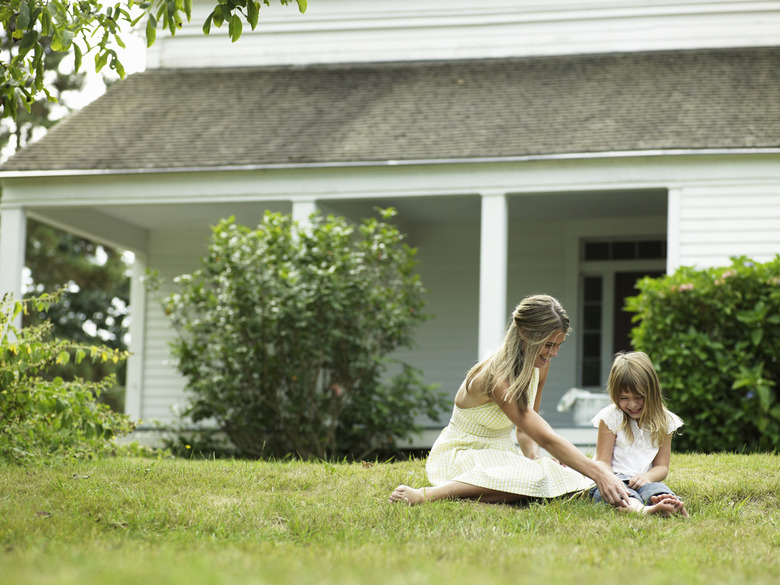How Does Sulphur Work On Lawns?
Sulfur is among the secondary nutrients that help promote healthy grass growth. Though lawns utilize this mineral in smaller quantities than the three primary nutrients of nitrogen, phosphorus and potassium, it is nonetheless essential.
Sulfur is among the secondary nutrients that help promote healthy grass growth. Though lawns utilize this mineral in smaller quantities than the three primary nutrients of nitrogen, phosphorus and potassium, it is nonetheless essential. Sulfur is best applied to lawns in recommended amounts as determined by a soil test. Careless or unnecessary sulfur use can seriously injure grasses.
How Sulfur Works
Sulfur's primary use on lawns is to reduce soil pH levels. High-pH, overly alkaline soil affects the availability of many nutrients grasses need. When sulfur is added to soil, soil bacteria convert the sulfur to sulfuric acid. This natural biological reaction slowly lowers the soil pH and make nutrients more available. The process takes much longer than the rapid chemical reaction caused by other products.
- Sulfur is among the secondary nutrients that help promote healthy grass growth.
- High-pH, overly alkaline soil affects the availability of many nutrients grasses need.
Effects on Grass
Sulfur encourages lush, green grass color and also helps with healthy root growth. Lawns with adequate sulfur amounts have stronger grass shoots with more dense blades and improved overall growth. Sulfur helps elevate carbohydrate reserves in lawns and reduces susceptibility to common lawn diseases. Lawns that lack adequate organic material are usually more prone to sulfur deficiency.
Signs of Deficiency
Conducting a soil test determines whether your lawn requires sulfur, but deficient grasses also display physical effects of low soil sulfur. Symptoms include the discoloration or yellowing of older grass blades. Lawns grow more slowly, and younger grasses are slow to mature. Grasses planted in sandy soils are more likely to suffer problems related to insufficient sulfur.
- Sulfur encourages lush, green grass color and also helps with healthy root growth.
- Lawns that lack adequate organic material are usually more prone to sulfur deficiency.
Application Recommendations
The amount of sulfur needed for your lawn depends on your soil type, pH and other factors, so follow your soil test results closely. Most lawns use 2 to 3 pounds of sulfur for 1,000 square feet per year. Choose a lawn fertilizer that already contains sulfur to cut down on labor. Water lawns well after sulfur application, and never apply excess. This can burn grass roots. Commonly used sources of sulfur include gypsum with 18.6 percent sulfur, potassium sulfate with 17.6 percent sulfur, ferrous sulfate with 18.8 percent sulfur and ammonium sulfate with 24 percent sulfur.
